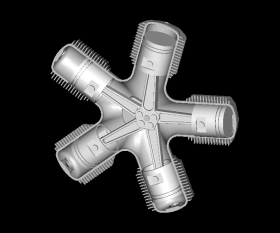First, there are databases where we can find out more about ancient and modern sets:
- On guide.ludnet.se we can learn that for example the 8480 Space Shuttle set became available in 1996, its price was $158 and contains 1366 bricks. It also gives us links to the building instructions and the set inventory (found on the next site).
- www.peeron.com is similar. Looking for the shuttle we get the inventory of bricks. The page also returns detailed information about the bricks. For example, clickling on article 2744 "Technic wing back" we can find out what colors was it available in and which sets contained this brick throughout Lego history. On the right hand side we can also find shops that sell this brick - we get back to that below.
- Following links from Peeron we can also get to www.brickset.com. Instead of raw facts we see reviews and scores. Our favorite shuttle was scored 4.4 points (out of 5).

Then there is www.bricklink.com where we can order bricks one by one. BrickLink is not a single store, rather a portal bringing together buyers and merchants from all around the world. It contains many merchants in the US, UK, France, Australia and other countries. Most merchants sell used and new bricks. (Just recently one can buy bricks directly from Lego one by one but their selection is smaller.)
Bricks can be found based on part number like on Peeron, or we can search directly on Peeron and follow the link from there. The latter one is a bit simpler because we see immediately in which country the merchant is located - that may be an important issue influencing our decision. Depending on your country it is generally worthwhile to buy from your own region, let it be the EU, US or Australia. This makes it sure there are no customs fees and the order can be there within 2-4 days. Postage & packaging is usually in the $5...$10 range.
To buy one needs a Paypal account that in turn requires a credit card. Paypal signup takes 2-3 days because they charge a small amount to our credit card (and then return it) to verify the card. Once this is done transfering money to the Paypal account takes another 2-3 days. It sounds complicated but singup is needed only once and can be used for many other things like buying second hand Lego on EBay :)

Once this is done we can complete the order. Before getting the invoice the order is open and we can append new batches of items. Getting the real bricks takes 3-4 days after making the payment, depending on your country. I live in Switzerland and have ordered from the UK and France. There were 2-3 day delays but both sellers were very responsive and they reacted quickly and precisely.
Good shopping!







